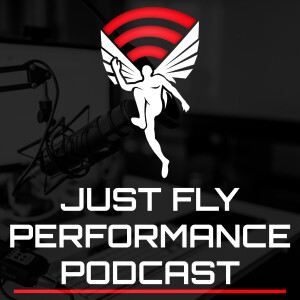
Gary Ward on Spiraling Foot Mechanics for Optimized Gait, Achilles Tendonitis Prevention, and Improved Athleticism
 2021-07-01
2021-07-01
Download
Right click and do "save link as"
Today’s show is with biomechanist Gary Ward. Gary is the author of “What the Foot” and founder of “Anatomy in Motion” (as well as the “Wake Your Feet Up” and “Wake Your Body Up” courses). Gary is known for solving unsolvable pain in minutes, not months, and his passion for the foot hugely influenced his interpretation of human movement.
Gary’s foot wedges and training system have had a massive impact on my approach to training athletes in a single leg setting, and between Gary’s influence, and that of running coach Helen Hall (a student of Gary’s), my approach to gait, running and the foot is forever changed for the better. Gary has been a previous 2x guest on this podcast, speaking on the topics of human movement principles, pronation, “duck feet” and much more.
In my ever-running interest in the foot and lower leg, and its role in human movement, I have been very interested in the role of the rear-foot in the past few years. Initially, I found that I was able to rid myself of plaguing Achilles tendon issues by mobilizing my calcaneus bone, which tuned me into the importance of looking beyond “foot stiffness” as a cover-all in lower leg performance. From there, I’ve become increasingly more interested in the role of the rearfoot in not only injury prevention, but also athletic performance situations.
On the show today, Gary Ward is back to take us on a deep dive into concepts of forefoot-rearfoot opposition and the role of the heel bone in pronation, supination and gait mechanics. He’ll go into how a well-functioning rear-foot plays into the gait cycle, and how this also works with the ability to get into the ball of the foot well in athletic movements. Gary will give some practical examples on how to check one’s rearfoot function, and we conclude the show getting into some nuts and bolts of squatting mechanics in light of 3D human movement.
Today’s episode is brought to you by SimpliFaster and Lost Empire Herbs. For 15% off your Lost Empire Herbs order, head to www.lostempireherbs.com/justfly
View more podcast episodes at the podcast homepage.
Timestamps and Main Points
6:37 – A recap on foot opposition, and how the twisting and spiraling of the foot works into human movement
22:03 – Gary’s take on how rearfoot mobility and foot opposition plays into the ability to get to the ball of the foot well in athletic movement
37:39 – How pronation and supination changes as ground speeds increase from walking to sprinting
49:10 – How to check for limited range in the rear foot, and how to get the rearfoot moving
58:52 – How the body will compensate upstream if it is getting too much or too little movement in the foot
1:04:12 – How arch height in barbell squatting impacts the athletic result of a barbell lift, and if the arches should flatten in a barbell squat
1:10.09 – Squatting and effortlessness in human movement
“The rearfoot is the calcaneus and the talus”
“When the calcaneus moves down, the navicular moves up”
“If there was a midfoot bone, I would say the cuboid is a midfoot bone… out of the 26 bones, we’ve got one midfoot bone. Otherwise, what we are really looking at is the forefoot opposing the rearfoot, and it does it in all three planes”
“The lowering of the arch is an opening of the joints at the base of the foot”
“If you roll pressure towards the inside edge of the foot, then you will initiate an eversion in your rear foot, but if I take the 5th metatarsal head off the ground, then what you lose is the opposition”
“There’s only one way to get the shin forward, and keep the heel on the ground for too long, and that’s to maintain a pronated foot position”
“If your foot does not pronate at the time it is supposed to, then the body will continue to pronate the foot until it reaches the amount of pronation it needs”
“You do need to get that (calcaneus) eversion to get into that toe rocker of the push-off phase”
view more
More Episodes
0123456789101112131416171819
Create your
podcast in
minutes
- Full-featured podcast site
- Unlimited storage and bandwidth
- Comprehensive podcast stats
- Distribute to Apple Podcasts, Spotify, and more
- Make money with your podcast
It is Free
- Privacy Policy
- Cookie Policy
- Terms of Use
- Consent Preferences
- Copyright © 2015-2024 Podbean.com





